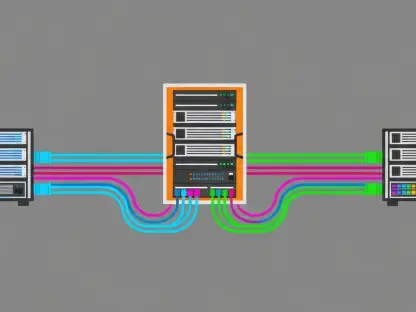I’m thrilled to sit down with Chloe Maraina, a Business Intelligence expert with a deep passion for crafting compelling visual stories through big data analysis. With her sharp expertise in data science and a forward-thinking vision for data management and integration, Chloe is the perfect person to guide us through the latest advancements in enterprise data solutions. Today, we’ll explore how cutting-edge platforms are transforming the way organizations access, govern, and trust their data, while breaking down silos and embracing AI-driven innovation.
How do you see the latest advancements in data platforms reshaping the way enterprises handle their data estates?
These advancements are game-changers for enterprises. They’re moving toward unified access and control, allowing organizations to tap into data no matter where it resides—be it on-premises, in the cloud, or across hybrid environments. This shift is significant because it addresses long-standing issues like fragmented systems and inconsistent governance. By integrating powerful tools and automation, platforms are now enabling seamless discovery and secure access, which is critical for driving innovation and making data a true asset.
What challenges do organizations typically face when their data is scattered across different systems, and how are modern solutions addressing this?
The biggest challenge with scattered data, or silos, is the lack of visibility and control. Teams often can’t access the information they need, or they face duplicated efforts and inconsistent security policies. This creates inefficiencies and risks. Modern solutions tackle this by federating data—allowing queries across systems without physically moving the data. This approach keeps data secure in its original location while providing a unified view, which streamlines operations and reduces complexity.
Can you walk us through how integrating query engines and metadata management tools enhances data access and control for enterprises?
Absolutely. Query engines like Trino, for instance, enable enterprises to pull insights from distributed data sources in real time, using the processing power closest to the data. When paired with metadata management tools like Cloudera’s Shared Data Experience (SDX), you get a centralized way to handle access controls and policies. This means no matter where the data sits, governance remains consistent. It’s about creating a single, secure entry point to all data, which simplifies management and boosts trust.
How does tracking the journey of data through lineage tools build confidence in data transformations?
Data lineage tools, such as Cloudera Octopai, provide a clear map of where data comes from, how it’s transformed, and where it ends up. This transparency is crucial because it lets organizations verify the accuracy and integrity of their data at every step. When you can see the full journey—even for data coming from external systems—it builds confidence that transformations are reliable, which is essential for decision-making and compliance.
In what ways is AI-driven automation changing the game for data management tasks in enterprises?
AI-driven automation is revolutionizing how enterprises manage data by taking over repetitive, time-consuming tasks. Think about processes like data quality checks, classification, or profiling—these are now handled with intelligent algorithms that learn and adapt. This not only speeds up operations but also reduces human error. The result is a massive boost in efficiency, freeing up teams to focus on strategic analysis rather than manual grunt work.
How are natural language interfaces making data more accessible to a broader range of users within organizations?
Natural language interfaces are a huge step toward democratizing data. They allow users—whether they’re technical experts or business folks—to interact with data using everyday language, without needing to know complex query syntax. This lowers the barrier to entry, so more people can ask questions and get insights directly. It’s empowering for organizations because it spreads data literacy and encourages a culture of data-driven decision-making across all levels.
What measures are critical for ensuring consistent governance and security across diverse environments like on-premises and public clouds?
Consistency in governance and security starts with centralized policies that apply no matter where the data lives. Modern platforms achieve this by unifying metadata and access controls, ensuring that the same rules govern data whether it’s in a data center or a public cloud. Additionally, robust encryption and secure connectors for federating data across systems are vital. These measures protect sensitive information and maintain compliance, even when data is accessed through multiple engines or environments.
How does the flexibility of deploying query tools in various environments benefit enterprises with complex data architectures?
Flexibility in deployment is a huge advantage for enterprises with diverse setups. Being able to run query tools like Trino in data centers or public clouds means organizations can adapt to their specific infrastructure needs without being locked into one model. Certified connectors further enhance this by enabling seamless data federation across systems. This adaptability ensures that enterprises can scale and integrate data sources efficiently, no matter how complex their architecture is.
What’s your forecast for the future of data management and AI integration in enterprise platforms?
I believe we’re just scratching the surface of what’s possible with data management and AI integration. In the coming years, I expect platforms to become even more intuitive, with AI not just automating tasks but also predicting needs and optimizing workflows in real time. We’ll see deeper personalization in how data is accessed and presented, tailored to individual roles within an organization. The focus will also shift toward even stronger governance frameworks as data privacy regulations tighten. Ultimately, the goal will be to make data a seamless, trusted part of every business process, driving innovation at an unprecedented pace.









